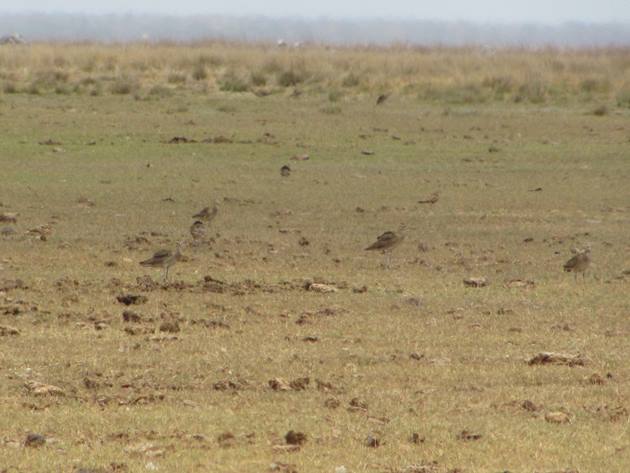
In recent weeks Little Curlews Numenius minutus have returned to Broome from their migration to the northern hemisphere. We used to encounter them regularly on the sports’ fields years ago, but now we encounter them out of town more often than in town. Little Curlews stand out very well when they are on lush green lawns as with the encounter with one at a park only metres from home in 2012, but when they are in the natural bush they soon disappear into the landscape and could easily be overlooked. You can hardly see the eight Little Curlews in the header photo, because they blend in so well. Even when the Little Curlews turn it is not easy to see them and there were over five hundred Little Curlews in this small area not far from town this past week.
Little Curlews
The main attraction to the area is the presence of insects and more importantly water. Remarkably there is still water remaining from the floods and cyclones earlier this year despite there being no rain for over seven months now. The Little Curlews left Broome to travel north when the land was still flooded and have now returned months later to an ever changing landscape. They are often in the presence of Australian Pratincoles, Oriental Pratincoles and Oriental Plovers on the open grass. Australian Pratincoles are observed easily as they fly chasing insects and the Little Curlews tend to run around on the vegetation chasing insects.
Once the Little Curlews enter the remaining water to cool down and drink they become a lot more obvious and despite the heat haze this time of year you can photograph them. There are also Brolga throughout the grassy plains now that the land has dried and they are in the below photo behind the water. A Red-kneed Dotterel faces us on the left of the bathing Australian Pratincoles.
Bathing shorebirds
It isn’t just the Little Curlews that are well camouflaged in the landscape. There are several Masked Lapwings lining the far side of the water, but they are a very noisy species and that soon gives away their presence.
Masked Lapwings, Australian Pratincoles and Little Curlews
Black-winged Stilt were also present at the remaining water and Straw-necked Ibis were nearby feeding on the grass. Yellow Chats are often found in this landscape and also Flock Bronzewings, Australasian Pipits and numerous other “brown birds“.
Shorebirds drinking and bathing in the middle of the day
As all of the shorebirds left the water to feed there was one lone Little Curlew that came and landed in the water and stayed for quite a few minutes cooling off.
Little Curlew cooling off
It is going to be some time before we see our first Wet Season rains here in Broome and this water may well be gone before the rains arrive. Any remaining water at any of the local ephemeral lakes will be excellent for birding and the muddy edges are already busy with Wood Sandpipers, Sharp-tailed Sandpipers and Long-toed Stint. Maybe the Grey-headed Lapwing or the Temminck’s Stint will return to Western Australia over coming weeks too!


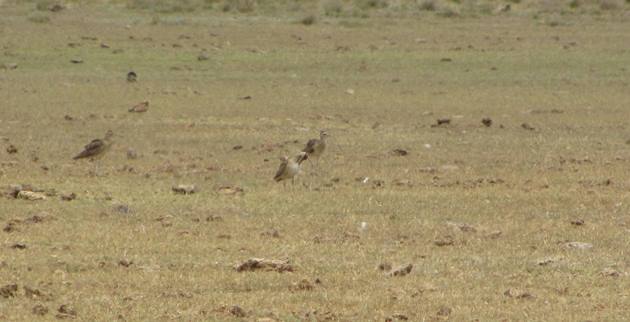
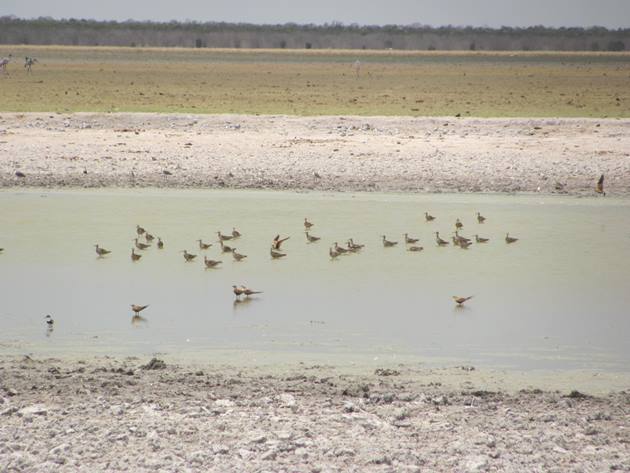
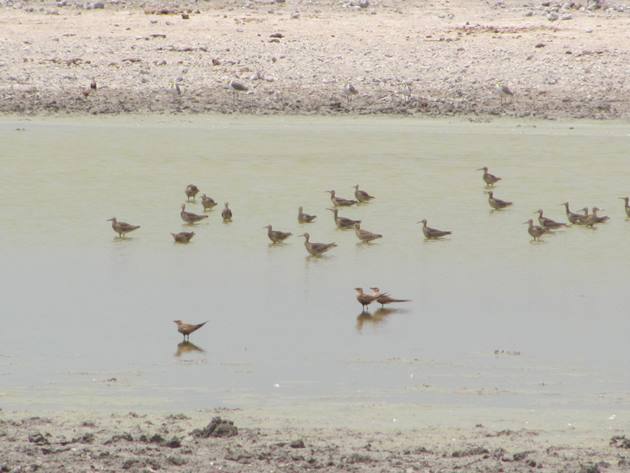
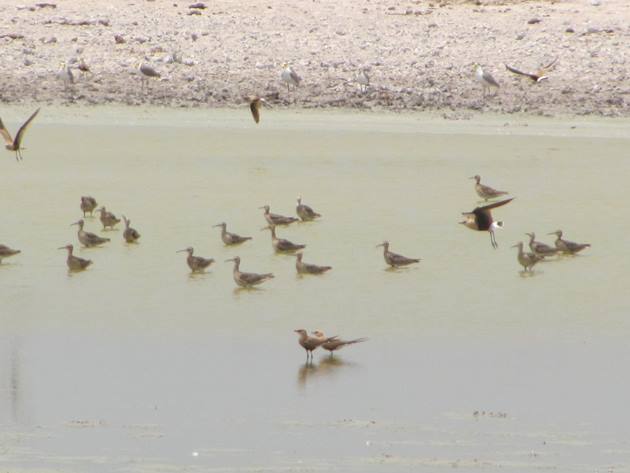

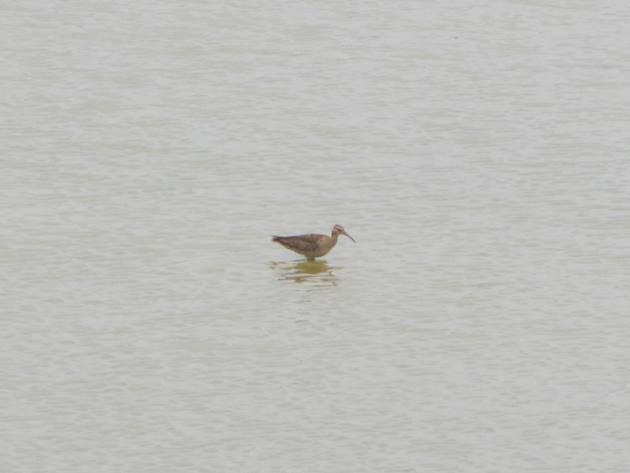











Leave a Comment